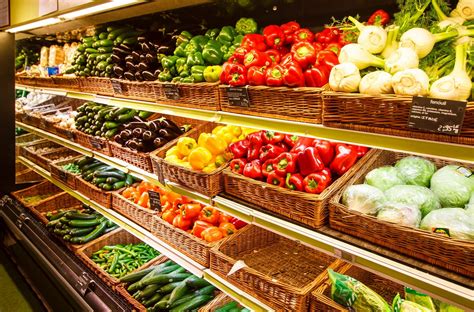Optimizing Your Grocery Store Experience for Maximum Savings
Maximizing Savings at Grocery Stores
To truly maximize savings at grocery stores, consumers should prioritize strategic planning before embarking on their shopping trips. Begin by conducting a thorough review of weekly ads and digital coupons, which often provide significant discounts on popular items. “Planning is key—savings start before you even set foot in the store,” advises a veteran shopper. In addition, creating a shopping list based on what you need, as opposed to what you want, can drastically reduce impulse purchases. Be sure to categorize items to efficiently navigate through the store and avoid unnecessary deviations from your planned route. Employing these tactics not only streamlines the shopping process but also empowers consumers to make informed purchasing decisions, ultimately leading to greater savings on their grocery bills. Furthermore, consider timing your visits for when stores offer markdowns or clearance sales; often, this information can be found through store apps or loyalty programs.

Effective Shopping List Strategies
Creating an effective shopping list is essential for achieving maximum savings and minimizing impulse purchases during your grocery store visits. To start, categorize your shopping list into sections that mirror the layout of the store, such as produce, dairy, and frozen goods. This approach streamlines your shopping experience and reduces the likelihood of purchasing unnecessary items.
Moreover, incorporating a price comparison table can enhance your ability to make informed decisions. Here is a simple format you might use:
| Item | Store A Price | Store B Price | Best Savings |
|---|---|---|---|
| Apples (lb) | $2.00 | $1.50 | Store B |
| Milk (gallon) | $3.50 | $3.00 | Store B |
| Bread (loaf) | $2.50 | $3.00 | Store A |
By reviewing prices before you head to the store, you can prioritize items that offer better value and hone in on the best deals available. Another important strategy is to plan meals for the week ahead and include only those ingredients on your shopping list, which not only optimizes your budget but also reduces food waste by ensuring that what you purchase will be used promptly.
Navigating Store Promotions Smartly
To make the most of your grocery store visits, it is essential to understand how to navigate store promotions effectively. Familiarizing yourself with various types of promotional offers, such as discounts, buy-one-get-one-free deals, and limited-time offers, can significantly impact your savings. Begin by examining the weekly circulars that many grocery stores distribute, as these lists often highlight the best deals available. Utilize this information to create a shopping list focused on discounted items. Additionally, consider planning your visits during specific days or times when stores refresh their promotions, often leading to further savings. By combining these approaches with strategic shopping behaviors, such as prioritizing essential items and avoiding impulse buys, you can maximize the benefits of sales while upholding your budget. Engaging with store loyalty programs can further enhance your savvy shopping skills by unlocking exclusive deals tailored to your purchasing habits.
Time-Saving Grocery Shopping Tips
Efficient grocery shopping is essential for maximizing both time and savings during store visits. One effective strategy is to shop during off-peak hours, which typically occur mid-morning or early afternoon on weekdays. These times tend to be less crowded, allowing shoppers to navigate aisles more quickly and avoid long checkout lines. Additionally, utilizing a well-organized shopping list can significantly reduce time spent in-store. Group items by category—such as produce, dairy, and canned goods—to ensure a seamless shopping experience. Furthermore, leveraging store apps or digital coupons can provide immediate access to promotions while allowing for quick price comparisons. By implementing these time-saving tips, shoppers can create a more efficient grocery experience that leaves room for savings on their overall grocery budget.
Making Informed Food Choices
Making informed food choices is a critical aspect of successful grocery shopping that directly impacts both health and budget. When navigating the aisles, it is essential to read product labels carefully; understanding nutritional information and ingredients can help shoppers select healthier options that align with their dietary needs. Additionally, prioritizing whole foods such as fruits, vegetables, and grains over processed items can lead to healthier meals and better savings in the long run. Another effective strategy is to compare unit prices across different brands, which aids in identifying the most cost-effective products. Utilizing online resources or store apps may also provide insights into seasonal produce and sales that can optimize selections while reducing costs. By focusing on these informed choices, you can build a shopping list that not only adheres to your budget but also promotes better eating habits and enhances the overall grocery experience.
Tips for Successful Grocery Visits
To ensure a productive grocery store visit, preparation is essential. Begin by creating a detailed shopping list that includes all required items, grouped by sections within the store. This approach allows for efficient navigation and reduces the likelihood of impulse purchases. As you shop, pay attention to store layouts and familiarize yourself with aisles that frequently carry your regular purchases. Additionally, consider shopping during off-peak hours to enhance your experience; fewer customers lead to less friction in navigating aisles and checking out. Moreover, leveraging digital tools such as grocery store apps can provide you with real-time updates on promotions and discounts, contributing to smarter shopping decisions. By integrating these strategies into your grocery visits, you not only maximize savings but also create a more streamlined and enjoyable shopping experience.
Understanding Store Loyalty Programs
Store loyalty programs are designed to reward frequent shoppers with various benefits that can lead to significant savings over time. By signing up for these programs, consumers gain access to exclusive discounts, personalized offers, and points that can be redeemed for future purchases. To maximize the advantages of these programs, shoppers should take the time to understand their specific terms and conditions. For instance, some programs may offer double points on certain days or for specific products. Additionally, it is crucial to regularly check for updates or limited-time promotions that enhance the value of loyalty rewards. By strategically utilizing these programs in conjunction with effective shopping list strategies and savvy navigation of in-store promotions, consumers can further enhance their grocery shopping experience while ensuring they save money effectively.
Budget-Friendly Grocery Planning
When it comes to budget-friendly grocery planning, a well-structured approach is essential to ensure efficiency and savings. Begin by taking inventory of your current pantry and refrigerator items to avoid purchasing duplicates. Creating a comprehensive shopping list is crucial; categorize items based on their location in the store to minimize time spent wandering aisles. Consider using apps that help track sales and promotions specific to your preferred grocery stores, allowing you to prioritize items that are discounted. Additionally, planning meals around sales can significantly reduce costs while ensuring variety in your diet. Finally, always remain flexible; if an item on your list is not on sale, be open to substituting it with a more affordable alternative that meets your meal requirements. By employing these strategies, you can enhance your grocery planning process and maximize both time efficiency and savings.
You may also like

30 Feline Funnies to Pre-Game Your Thanksgiving Feast

「CISプラス」創設で合意 プーチン氏ら、旧ソ連の首脳会議

Impact of the De Minimis Exemption on U.S. Imports Explained
You may be interested
Transformative Leadership Practices of the Target CEO
Transformative Leadership Skills Transformative leadership skills are essential in today's...
Experience the Unique Charm and Thrills of Jackson Hole
The Enchantment of Jackson Hole Nestled amidst the breathtaking Teton...
Walmart Stock Performance Insights and Future Outlook
Walmart Stock Historical Trends Walmart's stock performance has displayed a...
 The New York Times
The New York Times
- Brigitte Macron’s Slur Against Feminist Protesters Prompts an Outcry in France 2025 年 12 月 9 日 Ségolène Le Stradic
- Judge Says Ghislaine Maxwell Grand Jury Records Can Be Unsealed, Citing New Epstein Law 2025 年 12 月 9 日 Benjamin Weiser
- Man Charged With Attempted Murder in Shooting of Jets Player Kris Boyd 2025 年 12 月 9 日 Chelsia Rose Marcius
- Australia’s Social Media Ban for People Under 16 Takes Effect 2025 年 12 月 9 日 Victoria Kim
- Iain Douglas-Hamilton, Who Studied, and Protected, Elephants, Dies at 83 2025 年 12 月 9 日 Jeffrey Gettleman
- At the Supreme Court, Scenes From a Judicial Backlash 2025 年 12 月 9 日 Kate Shaw, William Baude and Stephen I. Vladeck
- Wall Street Is Shaking Off Fears of an A.I. Bubble. For Now. 2025 年 12 月 9 日 Joe Rennison
- In L.A., $750 a Month to Live in a Backyard Storage Unit 2025 年 12 月 9 日 Livia Albeck-Ripka
- Israeli Ban on Media Entering Gaza Remains, as Legal Challenge Is Delayed 2025 年 12 月 9 日 Aaron Boxerman
- Supreme Court Grapples With Whether to Lift Campaign Finance Limits 2025 年 12 月 9 日 Abbie VanSickle and Shane Goldmacher
Leave a Reply